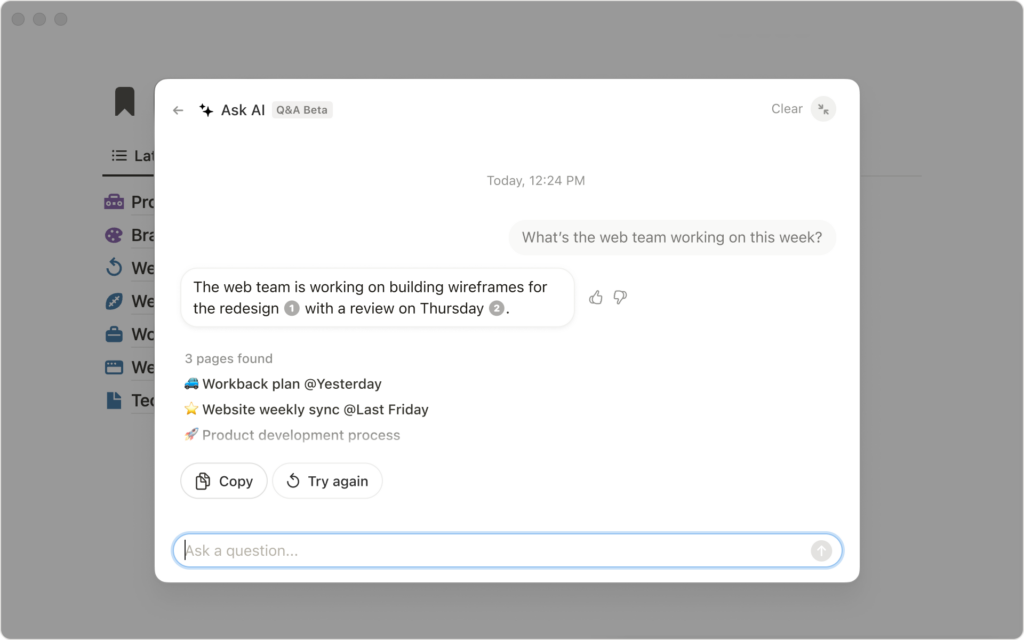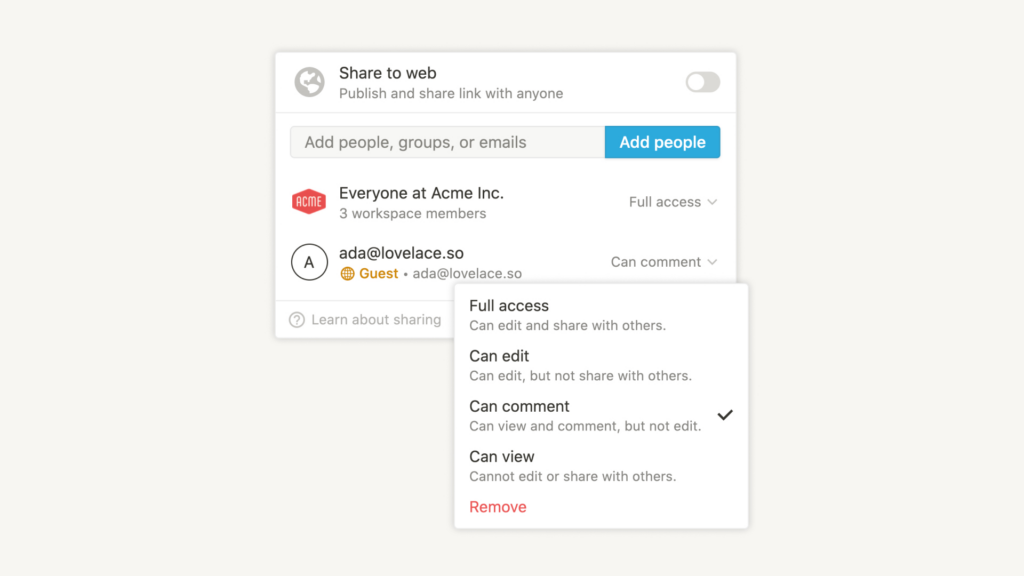We love Notion and we use it for everything, including taking notes. That’s why we developed a synchronization service to allow people to use it alongside other popular tools, such as Google Calendar and Todoist.
However, we also understand that Notion is not a dedicated note-taking app, strictly speaking, like Todoist, Evernote, OneNote, Apple Notes, or Google Keep.
Does this mean that Notion is not a good note-taking app? We don’t think so, although it has some caveats you should consider. Let’s take a look at them here.
Table of contents

Why Notion MIGHT be a great note-taking app
Certain features can make Notion an excellent note-taking app.
1. All-in-one organization
You can use Notion in its simplest form: just create a page and start taking notes, as you would with Apple Notes or Google Keep. You can also create a widget on your smartphone to access your notes quickly.
That being said, Notion can also be used as a comprehensive knowledge management system, featuring calendars, rich text, views, relations, rollups, and more.
So, at the end of the day, your tasks could encompass rich features beyond what other dedicated apps offer.
If you want to go beyond simple task management, Notion will open the door to create a complete ecosystem around your tasks instead of juggling several apps.
2. Thousands of templates
Notion’s community is large, which means there is a wide variety of templates available created by users like you and me.
If setting up and designing a page from scratch isn’t what you are looking for right now, you can just download a free note-taking template for Notion and start using it in seconds.

The templates are not static; you can add new properties, views, relations, and everything you wish to change to create a customized note-taking system that works for you.
3. Web Clipper tool
Notion features an official Web Clipper to save full pages, highlights, snippets, and any other media with a couple of clicks.

For those of us who take notes while reading new ideas or watching videos on the internet, this is extremely valuable because it allows us to take notes in relation to what we are interacting with. Context is important.
4. Built-in AI
Notion AI is not free, except for a limited number of prompts to try it out. If you are willing to pay for the Business plan ($20/month), the capabilities of your note-taking features will escalate.
The built-in AI assistance can create complete drafts from scratch, summarize, rewrite, generate action items, build templates, and much more—handy for turning raw notes into polished text that can even be published.

👉 Learn more: Notion AI vs. ChatGPT: Comparison & Real Examples
5. Collaboration and version history
Do you need to collaborate on your notes or to-do lists?
Unlimited teammates can work on your documents at once, with each cursor and avatar updating in real time. This live-editing engine is available even on the free plan.

If you completed a task, forgot what you did, or want to retrieve a note from the past, the free plan also lets you restore a snapshot from your notes from the past seven days—the Business plan stretches it to 90 days.
Why Notion MIGHT NOT be a great note-taking app
Here are some of the drawbacks to consider when choosing Notion as your note-taking app.
1. Steep learning curve
If you are new to Notion, you might feel overwhelmed by the blank-canvas approach to taking notes, unless you use one of the note-taking templates available for free.
The sheer number of block types and features might feel “too much” when trying to build a complete system. However, we believe this is more a lack of information about Notion’s capabilities than a drawback from the app itself.
To avoid spending more time building your system than taking notes, just use a predefined template and make changes when and if you need them. Or, just create a blank page and start adding bullet lists!
2. Offline limitations
The good news is that Notion developers are already working on a complete offline mode.
The bad news is that the current offline mode is limited. You can only edit pages that were opened while online, and new pages or databases can’t be created fully offline.
3. It can feel slow with large workspaces
This really depends on your use case, but Notion can struggle from time to time when loading large workspaces.
It doesn’t necessarily mean that your notes will load slower than in other apps because, normally, you would only have a few pages if you only use it for quick notes.
However, if you have several pages, relations, elements, and media embeds in the same database as your Notion notes, the performance might suffer—a bit noticeable when you’re just trying to jot down an idea.
4. It can be distracting
To be honest, this has happened to us. You want to locate your quick notes, and you end up browsing multiple pages until you reach them, since you have other projects, tasks, and data inside Notion. It can feel distracting.
An easy fix is to add your notes page to favorites so you can quickly access it on the sidebar. Also, the Home page will likely show it up if you use it frequently.
Finally, if you don’t use Notion for anything other than just taking notes, this should not be a problem at all.
Conclusion
What we see here is that Notion offers more than plain note-taking; it’s a complete productivity and knowledge management system that can be customized down to the detail. Its free plan is more than enough for that.
Notion’s deep customization options are what set it apart from other similar apps. Properties can be added, edited, and deleted in no time. Notes can be linked to other pages and databases. Automations can be set to respond to the user’s actions. And the offline mode will offer what is most needed right now.
Lastly, you can use 2sync to connect your Notion notes with other popular apps, like Google Calendar and Todoist, boosting your productivity while centralizing all your ideas.



